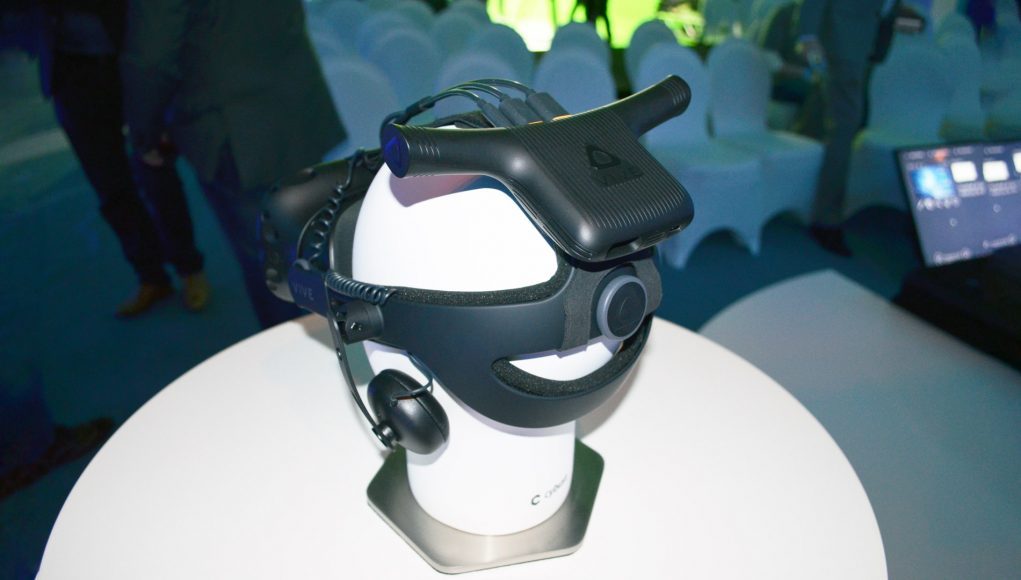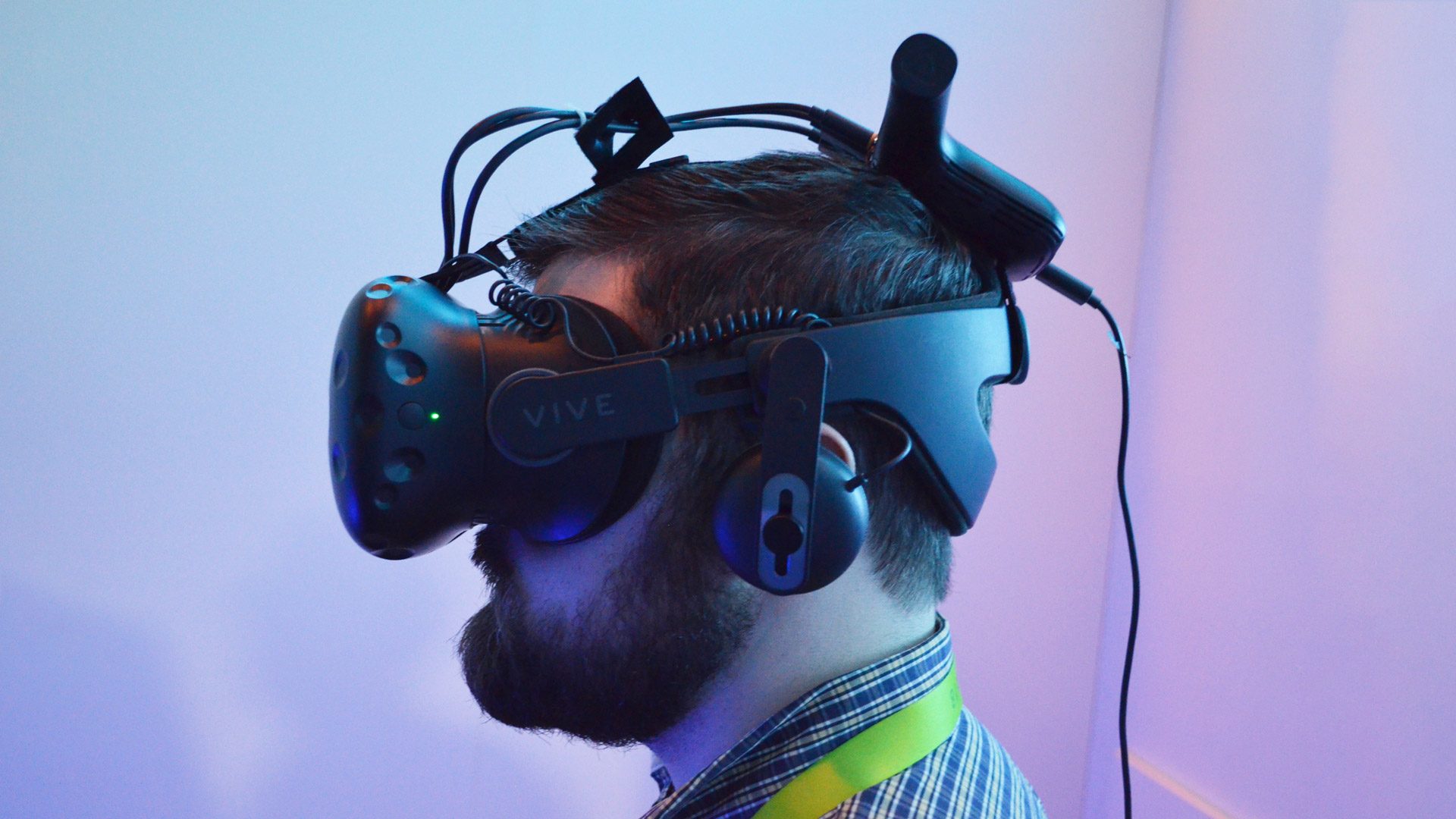During HTC’s pre-CES event where the new flagship Vive Pro headset was revealed, the company also announced an official Wireless Adaptor for Vive. The optional accessory will allow for a tether-free VR experience, and will support both the Vive and Vive Pro systems when it launches in the summer.
As mentioned during our liveblog, the Vive Wireless Adaptor uses Intel’s WiGig technology and is “optimised for low latency.” Much like the third-party solutions we’ve seen from DisplayLink and TPCast, the official adapter operates in the 60GHz band in order to handle the significant data throughput requirements. Unfortunately, no battery estimates or pricing was announced.
According to the press release, the Vive Wireless Adaptor will be “the first to market with a truly wireless VR headset integration for both Vive and Vive Pro.” The technology could be using the DisplayLink XR codec that was demonstrated at Computex last year as a collaboration between HTC and Intel, but that hasn’t been made clear in the latest communication. Update: The technology is indeed using the DisplayLink XR codec, as explained in DisplayLink’s own press statement.
It is also unclear whether the TPCast Plus solution also announced at CES will support the Vive Pro.
“Wireless VR has been on nearly every VR user’s wishlist since the technology was unveiled,” said Frank Soqui, General Manager Virtual Reality Group at Intel Corporation. “By collaborating with HTC to commercialize Intel’s WiGig technology, we will guarantee that wireless VR meets the most discerning quality bar for home users and business VR customers.”
We have feet on the ground at this year’s CES, so make sure to check back soon, as we’ll be bringing you a detailed hands-on of the Vive Wireless Adaptor along with all things virtual and augmented to come from the show.









